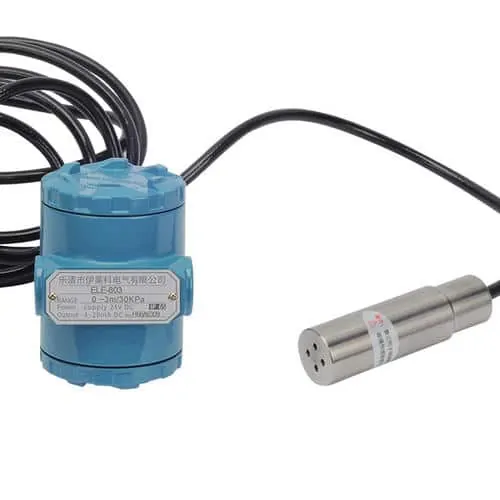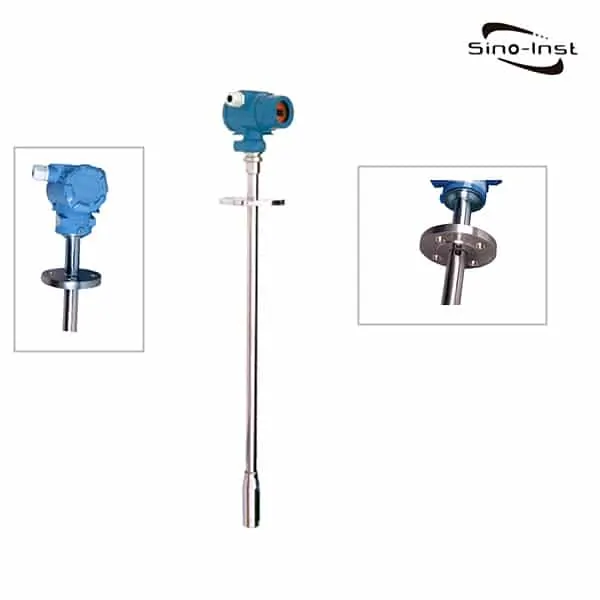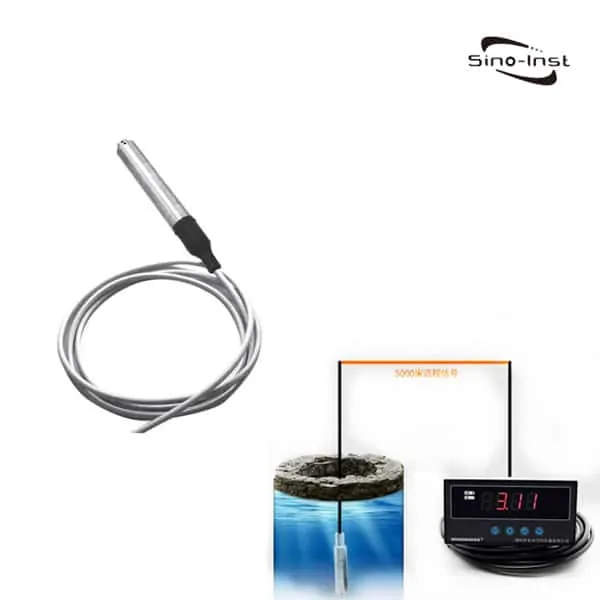Remote seal differential pressure transmitter is used to prevent medium from entering transmitter. The pressure sensitive diaphragm and the transmitter are connected by a capillary filled with fluid. It is used to measure the level, flow and pressure of fluids, gases or steam.
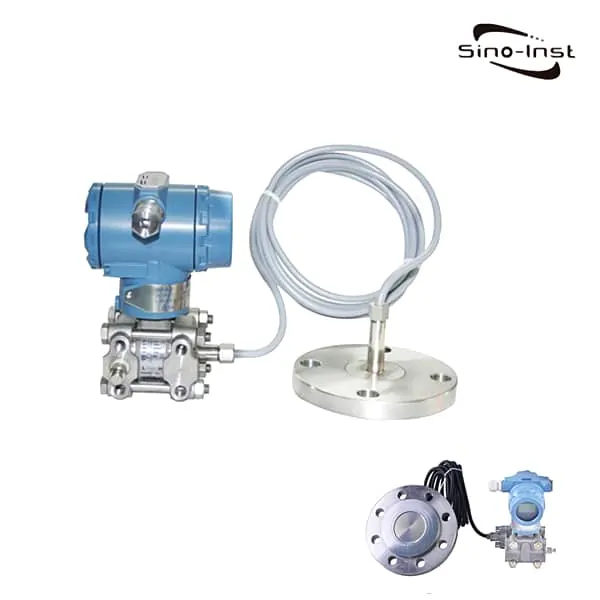
Remote Seal Differential Pressure Transmitter is often used as a tank level transmitter. The smart pressure transmitter is connected with a stainless steel flange by capillary. The pressure is sensed by a remote transmission device installed on a pipe or container. The pressure is transmitted to the body of the transmitter through the filling silicone oil in the capillary. Then The delta chamber and the amplifying circuit board in the main body of the transmitter convert the pressure or differential pressure to 4 ~ 20mA. The DC signal is output. It can communicate for the setting and monitoring by cooperating with the HART communicator.
Sino-Inst offers a variety of DP pressure transmitters for industrial pressure measurement. Connection with diaphragm seals. If you have any questions, please contact our sales engineers.
Features of Remote Seal Differential Pressure Transmitter
- Simulate the “online operation” assessment one by one. Ensure that the transmitter works stably and reliably under the extreme ambient temperature, medium temperature and working pressure (including positive pressure or vacuum).
- Adopt “dynamic profile” remote transmission diaphragm structure. The diaphragm will not be damaged after overload. The accuracy will not change after long-term work.
- The filling system with full fusion welding and rigid sealing structure is selected to eliminate the occurrence of oil leakage.
- Novelly designed capillary coupling parts. Capillary is reliably protected. It is not easy to break when used on site.
- Variety, form and size of remote transmission device. And a variety of filling liquid types. It can meet the measurement needs of various occasions.
- Various special products can be provided. Including high temperature, high vacuum, fast response and unequal length capillary (length ≤ 3 meters) remote transmission pressure transmitter
Specifications of Remote Seal Differential Pressure Transmitter
| Output signal: | 4 ~ 20MA. DC two-wire system (analog) superimposes the digital signal on the two-wire 4 ~ 20mA DC signal, and the user selects linear or square root output. |
| Power supply: | 12 ~ 45V.DC; |
| Load characteristics: | Power supply impact: <0.005% output range / V; Load effect: when the power supply is stable, there is no load effect; Measurement accuracy: ± 0.1% of the adjustment range, ± 0.2% standard accuracy is ± 0.2%, if other accuracy is selected, please indicate when ordering and selecting; Range ratio: 10: 1 or 100 to 1; Resistance: usually adjustable from 0.1 to 16 seconds, when inert liquid is filled or with a remote transmission device, the time constant will increase; Startup time: <2 seconds, no warm-up is required. |
Working environment: | ambient temperature -29 ~ 93 ℃ (analog amplifier); 29 ~ 75 ℃ (digital / smart amplifier); -29 ~ 65 ℃ (with display meter); Ambient humidity 0 ~ 95%. |
| Protection characteristics: | protection ability IP65; |
| Explosion-proof type: | Flameproof Ex d II BT4-6; Intrinsically safe Exia II CT5. |
| The effect of static pressure: | Zero error: ± 0.5% zui large range limit, for 32MPa under pipeline pressure by zero adjustments. |
| Electromagnetic radiation effect: | 0.05% large range value, receiving radiation frequency 27 ~ 500MHz, test field strength 3V / m. |
| Indication table (%): | LCD digital display accuracy ± 0.2%. |
| Vibration effect: | ± 200% / g when vibrating at 200Hz in any direction. |
| Installation position: | The diaphragm is not installed vertically, and a zero error of less than 0.24KPa may occur, but it can be corrected by zero adjustment. |
| Weight: | 3.9Kg (excluding accessories). |
Note:
① The working pressure of the remote pressure transmitter also depends on the specifications of the selected flange.
② The working temperature of the remote transmission device is determined by the type of filling liquid selected.
③ The remote transmission pressure transmitter refers to the output change produced by the temperature of the remote transmission device on one side.
④ The effects of static pressure and temperature are measured during a large range.
⑤ The length of the capillary on the side of the GP remote pressure transmitter is generally 1.5 meters, and the length should not exceed 3 meters (special agreement is agreed).
Read more What is a diaphragm seal?
DP Remote Seal Pressure Transmitter with Diaphragm Seal Installation



Rosemount 1199 remote transmission diaphragm system provides the world’s most extensive product variety and specifications to meet the requirements of various measurements and applications.
There are the following types of remote transmission differential pressure / level transmitters:
1) PFW flat type remote transmission device
2) RTW thread installation type remote transmission device
3) EFW inserted barrel remote transmission device
4) RFW flange mounted remote transmission device
5) SCW hygienic remote transmission device
The 1199 remote diaphragm can be assembled to Sino-Inst differential, gauge and absolute pressure transmitters and liquid level transmitters.
We can learn more about 1199 remote diaphragm.
Read more about: Differential Pressure Transmitter Installation Guide
Applications of Remote Seal Differential Pressure Transmitter
Remote Seal Differential Pressure Transmitter is a pressure sensor assembly used to prevent the medium in the pipeline from directly entering the transmitter. It is connected to the transmitter by a capillary filled with fluid. It is used to measure the liquid level, flow rate and pressure of liquid, gas or steam. Then it is converted into 4 ~ 20mA DC signal output. The applicable media are as follows:
- Viscous medium at high temperature;
- Easily crystallized medium;
- Precipitation medium with solid particles or suspended matter;
- Strongly corrosive or highly toxic medium;
- It can eliminate the occurrence of leakage of the pressure guiding pipe and pollute the surrounding environment. It can be avoided when using the isolation liquid. Because of the unstable measurement signal.
- Continuously and accurately measure the interface and density;
- The remote transmission device can avoid the mixing of different instantaneous media. So that the measurement results truly reflect the actual situation of process changes;
- Places with high sanitation requirements;
- Such as in the production of food, beverage and pharmaceutical industries. Not only does the transmitter contact with the media meet hygienic standards, but it should be easy to rinse to prevent cross-contamination of different batches of media.
Extended reading: SI-703 Flush Diaphragm Pressure Sensor
Precautions for use:
In the use process, we should pay attention to consider the following situations:
- When measuring the liquid pressure, the installation location of the remote pressure transmitter should avoid the impact of the liquid (that is, the water hammer phenomenon). In order to prevent the sensor from being damaged by overpressure.
- When the remote pressure transmitter transmitter freezes in winter. The transmitter installed outdoors must take anti-freezing measures. Avoid expansion of liquid in the pressure port due to icing volume. Lead to sensor damage.
- When wiring, pass the cable through the waterproof connector (accessory) or the flexible tube and tighten the sealing nut. In order to prevent rainwater etc. from leaking into the transmitter housing through the cable.
- When the remote pressure transmitter is used to measure the liquid pressure. The pressure tap should be opened on the side of the process pipe. In order to avoid sedimentation and accumulation of slag.
- To prevent the flange liquid transmitter from contacting with corrosive or overheated media. It is also necessary to prevent scum from depositing in the duct;
- When measuring the pressure of the gas, the pressure port should be opened at the top of the process pipeline. And the flange level transmitter should also be installed in the upper part of the process pipeline. In order to quickly deposit the deposited liquid into the process pipeline.
- The remote pressure transmitter should pay attention to that the pressure guiding tube of the sensor should be installed in a place with small temperature fluctuation.
- When measuring the steam or other high temperature medium of the remote pressure transmitter, it is necessary to connect a condenser such as a buffer tube (coil tube). The operating temperature of the transmitter should not be exceeded.
Extended reading: Smart Differential Pressure Transmitter
Remote Seal Differential Pressure Transmitters Working Principle
What is a diaphragm seal?
Diaphragm seals, also known as chemical seals or remote seals, are used for pressure measurements when the process medium should not come into contact with the pressurised parts of the measuring instrument.
A diaphragm seal has two primary tasks:
- Separation of the measuring instrument from the process medium
- Transfer of the pressure to the measuring instrument
You may like: Diaphragm pressure gauge
What is remote seal?
The remote seal is used to prevent the medium in the pipeline from directly entering the pressure sensor assembly in the pressure transmitter. It is connected to the transmitter by a capillary filled with fluid. As a result, they’re often used in refining, petrochemical, and chemical plants.
What are the advantages of diaphragm seals?
Diaphragm seals offer the advantage that the “contact surface” between pressure medium and diaphragm is relatively large. Thus ensuring accurate pressure measurement, especially for very low pressures (< 600 mbar). Furthermore, they can be easily dismounted, e.g. for cleaning or calibration purposes.
How do diaphragm seals work?
Basically, diaphragm seals are used in all pressure measurement processes to avoid direct contact between the measuring instrument and the medium during this process.
In addition, if the measuring point cannot be installed or read because the measuring point is located in a hard-to-reach location, a diaphragm seal can also be used.
In both cases, the applied pressure is transferred to the measuring instrument through the system fill fluid in the diaphragm seal housing.
The diaphragm of the seal can be made of different materials, such as stainless steel, Hastelloy, Monel or tantalum. In addition, coatings with ECTFE, PFA or gold can also be used.
We can provide the best diaphragm seal design, materials, system fill fluid and accessories for each application. The combined configuration of the pressure measuring instrument and the diaphragm seal is mainly determined by the special application conditions of the diaphragm sealing system.
Diaphragm type level transmitter working principle
Smart differential pressure transmitters are often used to measure liquid level, flow rate, etc. Differential pressure transmitter cooperates with sealing diaphragm, capillary, etc.

The differential pressure type liquid level gauge uses the principle that when the liquid level in the container changes, the static pressure generated by the liquid column also changes accordingly, as shown in the figure.
For closed tanks. Set the bottom pressure to P. If the pressure on the liquid surface is P3 and the liquid level height is H, then:
P = P3 + Hpg (3-11)
In the formula: p is the medium density; g is the acceleration of gravity.
From the formula ((3-1 “available:
△ P = P-P3 = Hpg (3-12)
Usually the density of the measured medium is known, the pressure difference △ P is proportional to the liquid level height H. The pressure difference on the side will know the measured liquid level height.
When the container under test is open, the gas pressure is atmospheric pressure. The negative pressure chamber of the differential pressure gauge can be vented to the atmosphere. It is known that the pressure gauge can also be used to measure the liquid level at this time.
If the container is closed, you need to connect the negative pressure chamber of the differential pressure gauge to the gas phase of the container.
Pressure level transmitter is good for level measurement. Most of the time, we use submersible hydrostatic level sensor for the level measurement. When you can not use the probe of hydrostatic level sensor, you can try with this pressure level transmitter. Pressure level transmitter, is one type of DP level measure instrument, with the diaphragm.
SMT3151LT Differential pressure (DP) level transmitter a new type of differential pressure (DP) transmitter produced by advanced technology and equipment. Continuous level, flow and differential pressure measurement. Liquid level measurement, is the most common measurement process in continuous production processes, such as: petroleum and chemical industry. The liquid level measuring instrument currently widely used, is the differential pressure level transmitter.
In the case of open tanks or underground water wells, Hydrostatic pressure level transmitters are also suitable.
FAQ
What is remote seal pressure transmitter?
Remote Diaphragm seal pressure transmitter with capillary is used as a level transmitter. Diaphragm Seals also called chemical seals, are used in applications where pressure sensor requires isolation from the process media. These applications are corrosive, high temperature, clogged. Or must sanitary fluids to remain in the pipeline or container. The pressure of the liquid in the process does not affect the pressure sensor. Instead, it is applied to the remote seal. And through the capillary, hydraulic pressure is transmitted to the pressure sensor. Installing and filling the diaphragm seal, the impact on instrument performance will be minimized. More
What is remote seal for level transmitter?
Remote seals are commonly used to protect pressure-measuring instruments including pressure gauges, pressure transmitters, and switches from hot, viscous, contaminated, or corrosive media. As a result, they’re often used in refining, petrochemical, and chemical plants. More Remote Diaphragm Seal System Pressure Transmitters
What is differential pressure transmitter working principle?
The basic principle of a differential pressure transmitter is to divide a space into two chambers with sensitive elements. When introducing pressure into the two chambers respectively. The sensor produces displacement (or displacement trend) under the combined action of the two pressures. This displacement is proportional to the pressure difference (differential pressure) between the two chambers. Convert this displacement into a standard signal output that can reflect the magnitude of the differential pressure.
A differential pressure transmitter is a transmitter that measures the pressure difference between the two ends of the transmitter. Output standard signals (such as 4 ~ 20mA, 0 ~ 5V). Differential pressure transmitters are different from general pressure transmitters in that they have two pressure interfaces. Differential pressure transmitters are generally divided into positive pressure end and negative pressure end. In general, the pressure at the positive pressure end of the differential pressure transmitter should be greater than the pressure in the negative pressure section to measure.
Extended Reading: Liquid pressure sensor
What is diaphragm seal pressure transmitter?
Diaphragm seal pressure transmitter with flange direct mount is good for level measurement. Diaphragm seals, also known as chemical seals or flush seals. Diaphragm seals work with pressure transmitter, pressure gauges. To prevent process medium from entering into the pressure-sensing assembly. So, Diaphragm seal systems protect pressure transmitters from hot, viscous, contaminated or corrosive media. Diaphragm seal connection can work with the capillary, flange and manufold. Like remote seal pressure transmitter, DP level transmitter. More
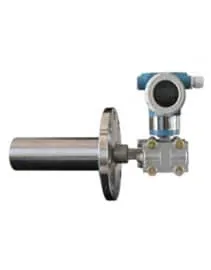
Extended Diaphragm Seal DP Transmitter is a level transmitter direct mounted on pipe or tank. The isolation diaphragm is in direct contact with the liquid medium.
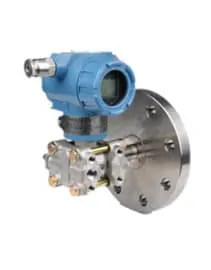
Flange Mounted Differential Pressure Transmitter is also called single flange DP level transmitter. For liquid, gas or vapor pressure measurement.
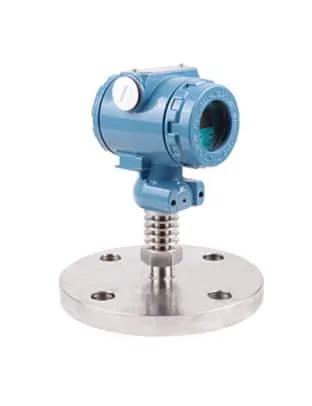
When the process medium should not come into contact with the pressured parts of the measuring instrument. Diaphragm sealed pressure transmitters are used for pressure measurement.

Remote seal pressure transmitter, with capillary and diaphragm seal, remote mount. Diaphragm seal systems protect pressure transmitters from hot, viscous, contaminated or corrosive media.
Extended Reading: Differential Pressure (DP) Flow Meters Technology
Sino-Instrument offers Remote Seal Differential Pressure Transmitters. A wide variety of Remote Seal Differential Pressure Transmitter options are available to you. Such as free samples, paid samples. Sino-Instrument is a globally recognized manufacturer of Pressure sensors, located in China. Sino-Instrument sells through a mature distribution network that reaches all 30 countries worldwide. Remote Seal Differential Pressure Transmitter products are most popular in Europe, Southeast Asia, and Mid East. You can ensure product safety by selecting from certified suppliers. With ISO9001, ISO14001 certification.
Request a Quote

Wu Peng, born in 1980, is a highly respected and accomplished male engineer with extensive experience in the field of automation. With over 20 years of industry experience, Wu has made significant contributions to both academia and engineering projects.
Throughout his career, Wu Peng has participated in numerous national and international engineering projects. Some of his most notable projects include the development of an intelligent control system for oil refineries, the design of a cutting-edge distributed control system for petrochemical plants, and the optimization of control algorithms for natural gas pipelines.

